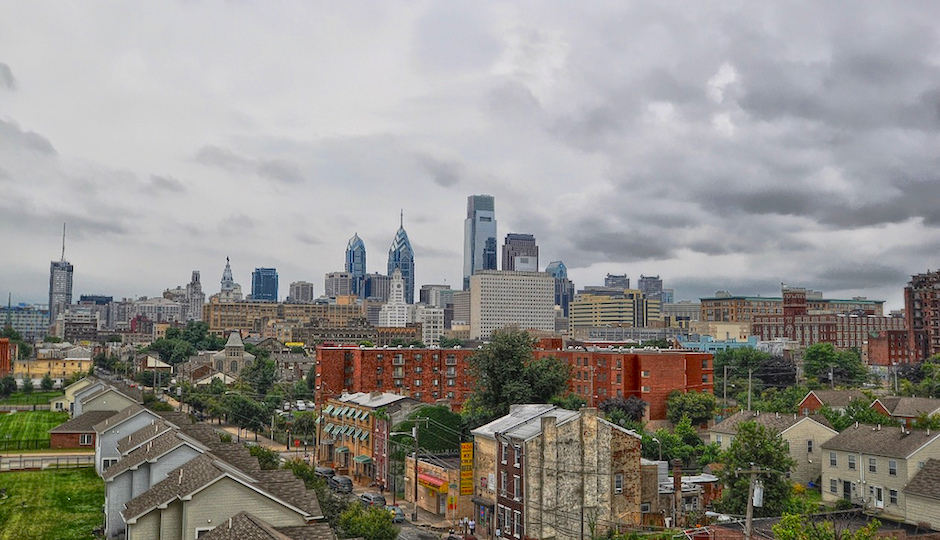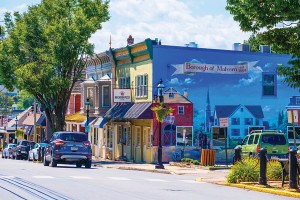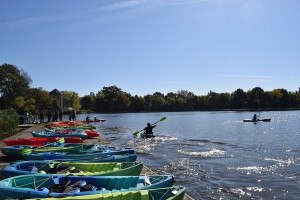What Does Philadelphia Smell Like? (and How Knowing Could Help Urban Planners)

Let’s assume petrichor surrounds this scene and call it a day. | Photo credit: Forsaken Fotos via Flickr
Many moons ago, when I was a teenager, there was this one cheesesteak place in South Philly that reeked. (The eatery shall remain nameless to protect the [inculpably?] noxious.) Now, I understand cheesesteak spots by their nature are inclined to emit a miasma of grease and onions, which I don’t mind at all because…well, it’s a cheesesteak place. No biggie.
But this spot was beyond that. Like, you’d pass with a group of people and there’d be audible moans of disgust and genuine gagging in reaction to the murderous stench. (Looking back, the fly-infested trash cans sitting out front likely added to the nose poison, but still.) I’ll never forget that corner (or eat there), which is why it came to mind upon my hearing about the “smellscape” study done by a team of researchers at the University of Cambridge.
The study, published last week in the paper “Smelly Maps: The Digital Life of Urban Smellscapes,” highlights how smell, as opposed to flat-out air pollution, can affect the environmental experience. Their findings suggest odor data on particular sections of a city can be used to inform the work done by urban planners and policy makers.
(If they ever got around to doing this in Philly, we’d direct them to these hot spots.)
Using “smellwalks” to come up with a carefully noted collection of smell-related words (they asked local volunteers from seven cities to go on these olfactory excursions), the researchers then geo-referenced those terms on Instagram, Flickr, and Twitter posts. After mapping this data, they color coded spots with either green (for nature-related words) or red (for words used to describe less pleasant emissions).
What did they discover? As CityLab puts it, “a high correlation between areas with poor air quality and the areas in which social media users detected emissions smells.” Emission odor terms in this case referring to the smell of “gasoline,” “exhaust,” and other similar descriptors. Meanwhile, positive, fresh-smelling “green” scents were predominant around parks.
The researchers, then, surmise that similar studies and maps could significantly inform the work of those with the power to improve a foul-smelling street experience. From CityLab (emphasis ours):
The researchers envision these maps being used in a variety of ways. Urban planners, they suggest, can use them to figure out which areas of the city smell the worst—and then consider using air-flow manipulation, green spaces, and pedestrian-friendly streets to change them. Maybe computer scientists will one day create a wayfinding app that gives users the most pleasant-smelling path to their destination. Or maybe city officials will be inspired to use social media data to more consistently monitor how their residents are being affected by smells—and by the pollution that creates it.
This “adds another layer to the connection between senses, the perception and identity of place, and economics,” said Harris Steinberg, Executive Director at the Drexel University Lindy Institute for Urban Innovation, when we asked him to weigh in on the findings.
He adds that planners should be looking at something like that because when “those things get your attention on a larger scale”–like say a rank cat urine-like odor from New Jersey assaulting South Philadelphia or a mysterious revolting stink hitting the Northeast– “those are clearly red flags, if you will, [about] planning.”
Any particular Philadelphia streets, corners, neighborhoods come to mind, whether for their nasty funk or sweet aroma? Feel free to share in the comments!
- H/T: Mapping Your City’s Smells [CityLab]


